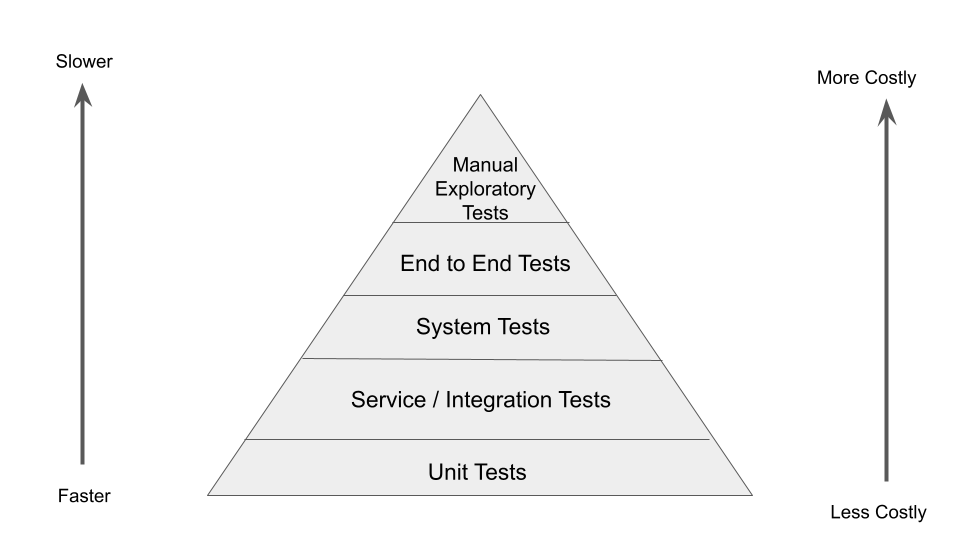DevOps Testing

DevOps testing is a type of software testing that combines traditional software engineering and Quality Assurance methods with the test automation, process automation, and the combining practices of DevOps. But before we move towards discussing “DevOps Testing” in detail, let’s first understand What is DevOps?
What is DevOps?
DevOps is the combination of Dev(Development) and Ops(Operation). It is a collaboration of people, process and technology within the Software Development teams for faster development and delivery of the software to market. It also helps in providing faster feedback on the builds and fixing the issues that arise as development progresses.
Previously Teams like Operations, Security, etc used to work separately from the Software development teams which created a gap between these teams and the releases and after release processes were hit. DevOps ensures that all the teams work in an engaged mode to ensure faster feedback and deliver quality products.
Purpose of DevOps Testing
The purpose of DevOps testing is to ensure that the application and its environment are stable, accurate and secure. This type of testing integrates automated test scripts with the core software development and deployment process, allowing for more rapid testing, more reliable results, and quicker feedback to development teams.
The main objective of DevOps testing is to reduce the time it takes to develop a solution without compromising on quality. It involves automating the process of testing, which helps in increasing the speed of delivery and provides more timely feedback. Additionally, the scope of DevOps testing can be used to identify the vulnerabilities and defects in the code that are not detected by traditional software testing approaches.
Furthermore, integration testing, performance testing and security testing can also be part of DevOps testing in order to ensure the application meets the desired criteria. Lastly, DevOps testing offers several benefits such as faster time to market, improved reliability and reduced cost of delivery.
DevOps LifeCycle
Devops Lifecycle consists for 5 important phases, those are listed below :
- Planning.
- Development
- Testing
- Deployment.
- Operations.

Let’s discuss these phases in detail.
Planning
The crucial factor in deciding the delivery is the plan. It helps in getting the answers to the common question like:
- What is to be developed?
- When it is to be developed?
- Who will be working on what?
- When will it be delivered?
In this phase, teams sit together and discuss the features to be developed, the business goals, defining the entry and exit criteria for the features, and timelines to release the product to market.
Clients are involved in this planning phase as well to ensure the transparency between the stakeholders and the development team. Hence, in case there is something that needs to be prioritized can be discussed in this phase and accordingly adjustments can be made to the plan.
Once the plan is finalized, following action items needs to be worked upon:
- Creating Backlogs
- Prioritizing the features.
- Creating Agile Dashboards to monitor progress of projects.
- Delivery Dates.
- Working towards coordination with Third Party Vendors.
Development
This is the main phase where the actual development of the software takes place. In this phase the team works towards the following:
- Selecting/Creating Development Environment.
- Writing the code to develop features.
- Perform Static Code analysis and review the code.
- Write Unit, Integration, Contract and Component test.
- Use version control, like Git, to collaborate on code and work in parallel.
- Build and deploy the code to different environments.
Testing
Testing is the most important part of the DevOps LifeCycle as it is involved in every phase of the LifeCycle from Planning to Deployment. Without Continuous Testing, DevOps can not succeed.
In the Planning phase testing is done by checking if we are heading into the right direction by asking right questions and getting all the clarifications about the product in development.
Once the developer commits the code to the repository, the automated pipeline starts running the scheduled tasks for Unit tests, Integration tests, System tests and End to End Tests. Any failure in any of the stages breaks the pipeline and team is required to fix the broken stage and rerun the tests. Hence, the development and testing happen in parallel and the team gets faster feedback on every code commit.
Deployment
This is the phase which is of most importance from the Operations point of view and many times in my experience, I have seen that even after performing multiple test checks, running Automation regression tests thoroughly, the deployment had failed and the build is of no use from the end user’s perspective. Hence, DevOps Testing ensures that whatever build we generate is stable and can be deployed to any environment successfully.
It is recommended to have different environments for checking the stability of the builds, like once the development is completed and all the automated checks are performed on the build, the build should get deployed to QA Environment and then to UAT and after the UAT sign off, finally to production.
This deployment is done automatically as soon as all the tests staged in the automated pipeline passes.
Operations
This phase involves maintaining, monitoring and troubleshooting applications in the production environment. Automated logs and events generated in production could be great help in diagnosing the issues and fixing them quickly. Continuous Testing and Automated Deployment helps in providing the faster feedback in the builds which eventually helps in actual production to deployment.
Following the Test Pyramid in DevOps Testing

Test Pyramid is a process that can help the development and testers to build and deliver high quality software.
The lower section of the pyramid helps in getting faster feedback as the issues we find in the lower section of the pyramid are less costly to fix.
The main aim is to get faster feedback on the builds. As we move in the upward direction of the Test Pyramid, the feedback is slower and issues are more costly to fix.
Let’s discuss the Test Pyramid that can be followed for practicing Continuous Testing in DevOps.
Unit Tests: This stage runs the unit tests as soon as the code is committed by the developer to the repository.
Service/Integration Tests: These tests are executed after the Unit Tests are successfully run. The main idea behind these tests is to check the different components/Services of the system are communicating and working correctly in sync.
System Tests: These tests are run once the unit and integration test checks are successfully run. These tests check the integrated system as a whole.
End to End Journey Tests: These are the end to end user journeys which QA team normally write. These are regression tests for the system. These tests ensure that the system is working correctly from the end user’s point of view.
Manual Exploratory Tests: The tests which can not be covered as a part of Automated tests can be tested in this stage. In this stage, manual exploratory testing of the application is done to find out the stability and the working of the application. Here, functional and non functional both kinds of testing can be done to check the quality of the application.
Conclusion
With the businesses demanding frequent quality releases, it is necessary to bake the quality within the product. The traditional practices of Software Delivery has been replaced by DevOps where automated pipeline helps in Continuous Testing and Automated Deployment to deliver the product to the end users frequently with quality.
About Author
Faisal is a Software Testing Professional having 14+ years of experience in automation as well as manual testing. He is a QA, freelancer, blogger and open source contributor. He loves learning new tools and technologies and sharing his experience by writing blogs.

About VTEST
VTEST is an independent software testing company catering to product and service teams across the globe. We are a team of software testers who are passionate about quality and love to test. We develop an in-depth understanding of the applications under test and include software testing services strategies that deliver quantifiable results.
In short, we help in building incredible software.




